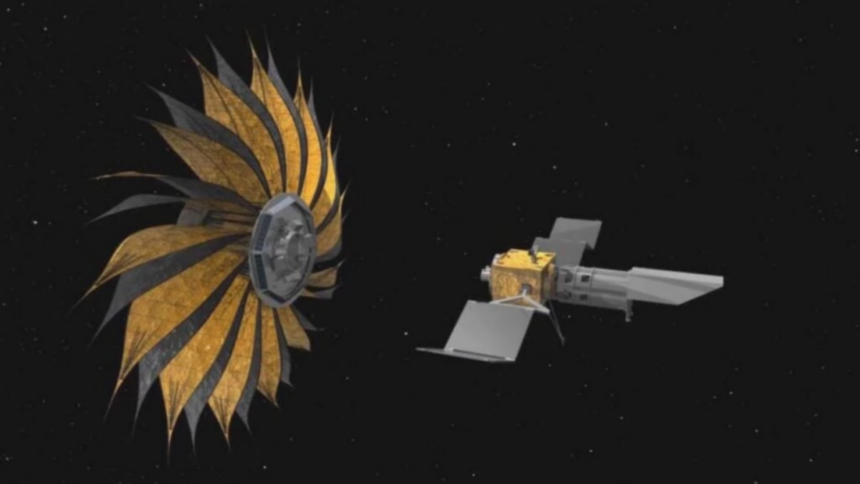NASA is preparing to launch the Habitable Worlds Observatory (HWO), a groundbreaking ‘alien-hunting’ telescope that experts believe will uncover an inhabited planet by 2050. This ambitious project aims to search for a ‘wide variety of biosignatures’ emitted by living organisms, with the launch expected around 2040.
Dr. Jessie Christiansen, a chief scientist for NASA, is confident that HWO will detect ‘a signal in the atmosphere of a planet in the habitable zone of a star like our sun within our lifetime.’ Scientists working on the project have already identified 25 Earth-like planets around sun-like stars as potential candidates for study.

HWO has been dubbed a ‘Super Hubble’ telescope and is designed to directly image Earth-sized planets orbiting other stars. The observatory will feature a mirror similar to that of the James Webb Telescope and ultra-precise optics to scrutinize the atmospheres of these worlds for signs of life.
NASA’s exoplanet team, consisting of astronomers, physicists, engineers, and scientists, convened last January in New Orleans to discuss the necessary tools for the job. Dr. Courtney Dressing, a co-leader of HWO’s Science Architecture Review Team (START), proposed equipping HWO with the capability to detect a ‘wide variety of biosignatures’.

HWO will be able to detect:
- Biogenic gases produced by living organisms
- Aerosols and other airborne pollutants
- Surface biosignatures like the infra-red heat produced by vegetation
- Artificial ‘technosignatures’ made by a civilized alien race
Dr. Dressing emphasized that additional information about the planet and planetary system is essential to interpret biosignatures and rule out false positives.
Dr. Jessie Christiansen believes that HWO could find proof of extraterrestrial life not long after its launch in 2040. ‘I believe, in our lifetime, something like HWO will see a signal in the atmosphere of a rocky planet in the habitable zone of a star like our sun that we think is life,’ she told New Scientist.
Military contractors Northrop Grumman, Lockheed Martin, and Ball Aerospace (BAE Systems) will begin their work on HWO this summer. Their two-year, $17.5 million effort includes building ‘ultra-stable’ optical sensor systems that NASA hopes will be ‘beyond current state-of-the-art tech’ to ensure HWO operates effectively in orbit for as long as possible.

This year’s expenditure is modest compared to the $11 billion total that NASA hopes the US government will allocate to the HWO telescope. The project’s primary mission is to directly image at least 25 prime candidates for potentially habitable worlds.
Dr. Christiansen speculates that discovering extraterrestrial life might ‘start a revolution in life, religion, philosophy, and science.’ However, she also admits that public reaction might be more subdued than expected. ‘It might be a headline for a day,’ she conceded, ‘and then everybody just goes back to what they were doing.’
NASA’s Habitable Worlds Observatory represents a monumental step forward in the search for extraterrestrial life. With its advanced technology and collaborative efforts, HWO aims to uncover the secrets of distant planets and potentially change our understanding of life in the universe.






